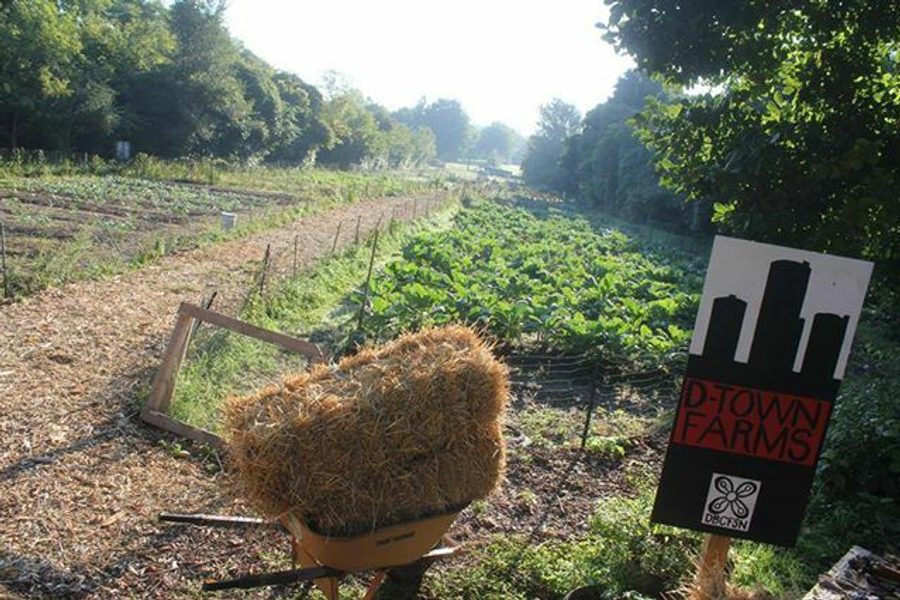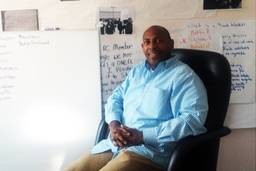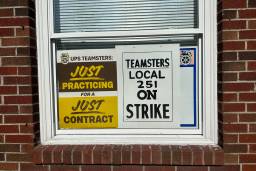Imagining a World After Capitalism
Activists and organizers gather in Detroit to discuss work and culture beyond the free market framework.
H Kapp-Klote

“I am coming to the end of a long journey,” wrote longtime activist Grace Lee Boggs last month as she entered hospice care. But “the people [are] exercising their creativity in the midst of devastation.”
In what will likely be one of her final written statements, Boggs also invited the world to Detroit for the New Work New Culture (NWNC) conference of October 2014, a convergence of those considering what Boggs calls “visionary organizing,” a reimagining, and attempt to create alternatives outside, of capitalism.
While the movement of “visionary organizing” has its limitations, the tangible projects showcased at the New Work New Culture conference by Detroit residents conveys the urgency felt under the economic conditions of that city. Activists in Detroit and elsewhere are asking, if not capitalism, then what?
The free market has, by many estimates, failed much of the population around the world. Increasingly, the inequity, racism, and ecological destruction wrought by market forces have been on the radar of even typically pro-business media.
“The paradigm is shifting and the veils are lifting,” Halima Cassells, a Detroit parent and panel speaker at NWNC stated.
The conference highlighted examples of Boggs’s style of “visionary organizing” in arts, housing, and energy production around the world, from Arizona to Spain.
The NWNC conference’s location in Detroit makes sense, as the city offers a classic example of the devastation of our economic system. The thriving “Motor City” of the 1950s lost both capital and population as automobile companies machinated their workforce and moved jobs out of the city. Hit especially hard by the 2009 foreclosure crisis, Detroit’s joblessness rate has hovered near 20% ever since.
After filing for bankruptcy in 2013, the city was placed under emergency management. Unsurprisingly, Detroit’s devastation is distinctly racialized: the largest city to ever be placed under emergency management, with an 82 percent black population, Detroit’s residents make up a huge share of the half of Michigan’s black population that lives in cities and towns without democratically elected local governments.
But after decades of neglect and Detroit-phobia in media, Detroit is back in the spotlight for its corporate-driven revitalization, or what the New York Times called “the post-post-apocalyptic Detroit.” This ostensible city renewal is characterized by privatization, with public land sold for pennies to out of town corporations, rising rents as housing marketed to the “creative class” is built, and a distinct racial divide in access to resources meant to invigorate the city economy. This privatization has been a significant factor in city actions like the recent shutoffs that cut off water access in thousands of homes across Detroit.
This weekend was a particularly momentous “time on the clock of the world,” for Detroit, a framework for revolutionary analysis coined by Boggs that echoed throughout the conference. NWNC was bookended by the annual Black Farmers and Urban Growers conference and by United Nations rapporteurs’ visit to hear community testimony on water shutoffs. Across the city, Detroit residents were organizing against market forces that characterized their struggle.
The most compelling part of NWNC was the opportunity for Detroiters to challenge the narrative of desolation that plagues media coverage of the city and showcase practices that have worked in rebuilding community in the “post-industrial” city.
“We were supposed to turn our backs on you, Detroit,” said Tawana Petty, one of the conference’s organizers, in the opening ceremony.
This theme — of communities creating alternatives to broken systems — was repeated throughout the weekend, as long-term Detroit organizers discussed their work in food justice, land, and shifting culture more broadly for the last 40 years.
According to Brent Smith, a Detroit native that performed on the opening night of the conference as @theblaksmith, “It’s about us shifting the narrative of Detroit — when you build something new, it’s important to think of the context and the history of the community.”
Though the creative approach to social change outlined at NWNC was certainly inspiring, there were moments where speakers and organizers moved away from the tangible, to the detriment of their vision.
One panelist spoke at length about “the devastation of climate change,” but moved on before addressing its ramifications for imagining a new future. Another warned the primarily over-30 audience that technology like Facebook was challenging our humanity, demonstrating a disconnect with the online youth organizing strategies that have proven so effective in Ferguson and during Occupy Wall Street.
However, as these conference speakers theorized about new, youth-centered technology as a potential barrier to organizing, Detroit youth organizations like Brightmoor Bikes and Trikes, Brightmoor Woodworkers, and DCH Apparel were repairing bikes, woodworking, and silk screening right outside the main auditorium. Their projects provided a source of grounding for the conference in its Detroit community roots.
The Grace Lee Boggs Center and Grace Lee Boggs herself have both been challenged recently for more than just an abstract approach to social change. “Visionary organizing,” characterized by Boggs as “veering away from the reactionary nature of protest organizing” has been characterized as a misleading, even conservative approach to working against inequality.
Most critics of visionary organizing emphasize the inability of “visionary organizers” to act in isolation from market forces, citing the elementary charter school opened by the Boggses as an example of the ways in which visionary organizing in isolation leaves not only unable to resist austerity but even unintentionally helping further it.
Yet speakers at the conference stressed ”simultaneity,” or the importance of acknowledging that there are multiple methods of organizing and myriad groups and individuals working to achieve social change. The frequent mention of the community members speaking with UN rapporteurs was always met with enthusiasm by conference participants. More compelling was Detroit residents’ response to criticism in this vein, tinged with polite exasperation: It’s easy to see why citizens of a city without the ability to vote for their elected officials would embrace alternative systems to capitalism for wholly practical reasons.
“We’re not going to wait on someone to come save us,” said Shane Bernardo, a speaker and the Outreach Coordinator for Detroit’s EarthWorks Urban Farm. “We’re dealing with grey areas and imperfections in building the world we want to live in.”
As much of the rest of the country experiences the kind of privatization and neglect that Detroit has experienced, the need to engage with creative organizing strategies such as those discussed at NWNC will grow.
“What’s happening in Detroit is what’s going to happen to the rest of the world.” Bernado added. “When you look at the different forms of commodification, privatization, and austerity — it’s coming. If it hasn’t come already, it’s coming.”
Though visionary organizing might not be the singular solution to the problems of capitalism, its grounding in Detroit, and the “creativity in the midst of devastation” that Boggs describes, gives visionary organizing and the New Work, New Culture project a sense of urgency that will likely only continue to build.






